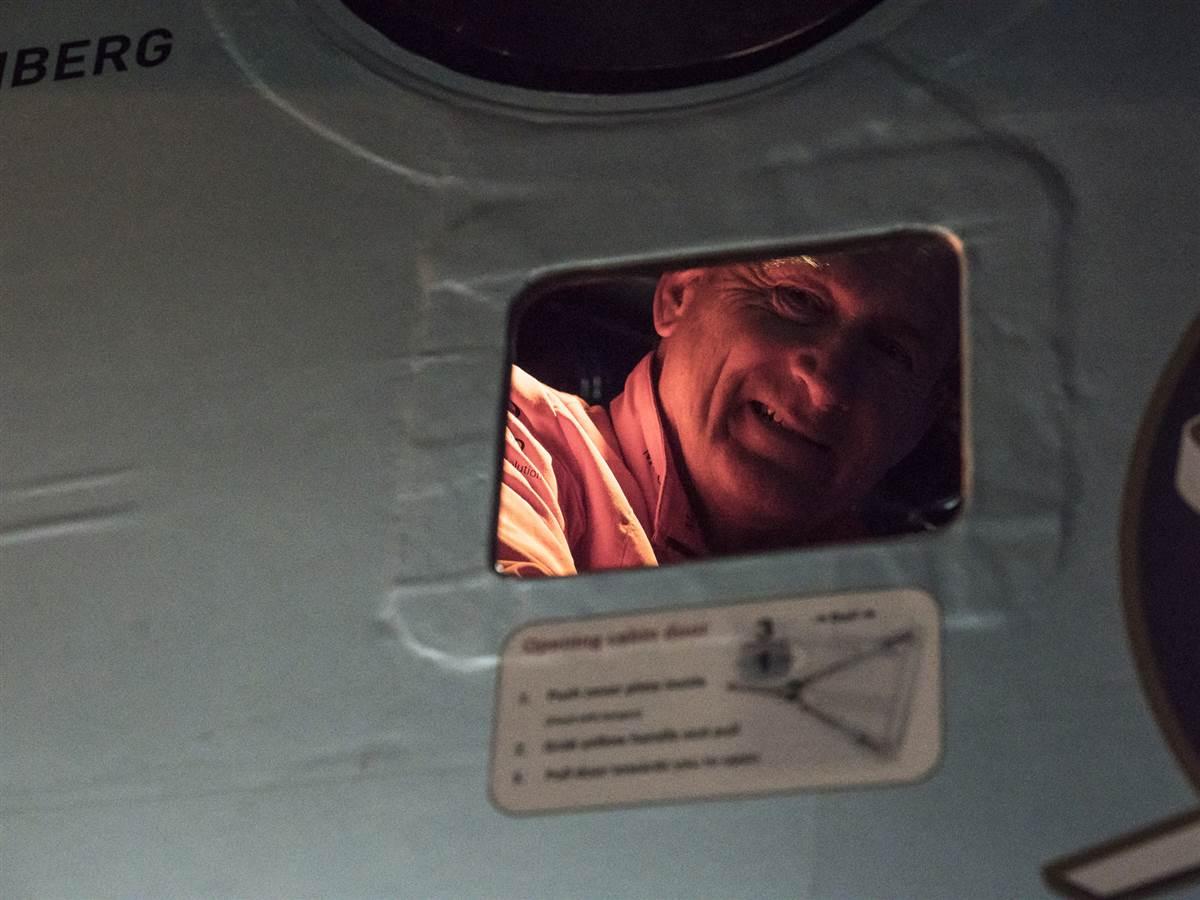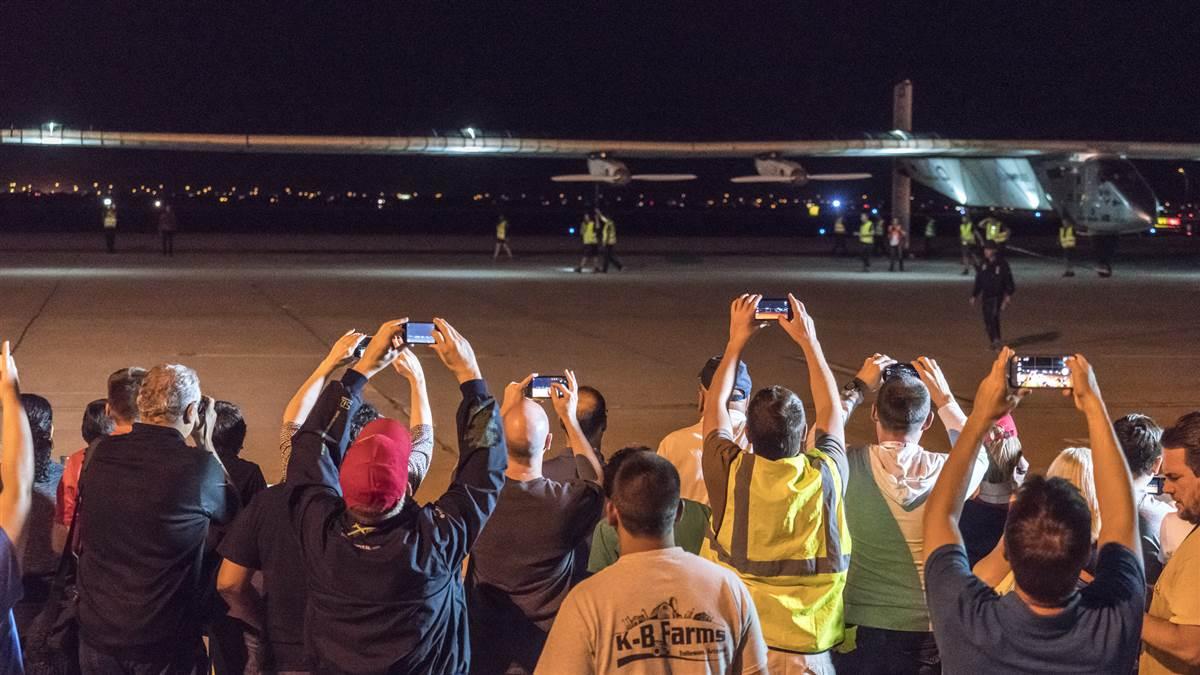Solar Impulse lands in Phoenix
Solar Impulse co-founder and pilot André Borschberg logged a much shorter trip May 2 than some he has made. A predawn launch from California was followed, just under 16 hours later, by a warm welcome in Phoenix.
André Borschberg managed some blistering speed (by Solar Impulse standards) on his flight to Phoenix, a wind-aided maximum of 100 knots, the team reported. That helped keep the first leg across the continental U.S. short by Solar Impulse standards, just a few minutes shy of 16 hours between Moffett Federal Airfield, where project co-founder Bertrand Piccard (who is alternating legs with Borschberg during the round-the-world journey) had landed on April 23 after a 62-hour trek from Hawaii.
Solar Impulse 2 lifted off at 12:03 p.m. UTC (5:03 a.m. PDT) on May 2, following a planned route (which is detailed in the project’s online flight log) that would keep the large but lightweight aircraft west of the Sierra Nevada before turning more southeast to Arizona.
“I will climb later on much higher to avoid the thermals that you’re speaking about,” Borschberg told the news anchors during one such conversation from the cockpit.
The pilot told viewers (including those who watched online via the Solar Impulse website) that he was looking forward to returning to the city and state renowned for sunshine. Sunlight feeds more than 17,000 solar cells on the highly specialized aircraft that also includes a single seat and 5,100 pounds of batteries to power it in darkness.
“I am very eager to come b ack to Arizona,” Borschberg said, noting that the original Solar Impulse prototype aircraft had also visited the state known for abundant sunshine. “I could go to you and not stop in Phoenix but it would be a pity to do so.”
ack to Arizona,” Borschberg said, noting that the original Solar Impulse prototype aircraft had also visited the state known for abundant sunshine. “I could go to you and not stop in Phoenix but it would be a pity to do so.”
Stopping as planned helped Borschberg warm up from the chilly temperatures found at 22,000 feet, his peak altitude for the May 2 mission. Thanks to tailwinds, Borschberg touched down a few minutes ahead of schedule at Phoenix Goodyear Airport, landing at 8:55 p.m. local time (3:55 a.m. UTC on May 3). A crowd waited to greet Borschberg and his high-tech airplane.
Borschberg did not say exactly how long the layover would last before the next leg, or reveal the next destination as the team makes its way east toward New York, but said during another live television interview that the team expected to be in Arizona “at least one day.” A May 2 press release from the team notes that Piccard will fly the next leg as Solar Impulse 2 makes its way east across the country, and will launch “as soon as possible, weather permitting.” The team sends updates to those who subscribe online.
The project has raised $170 million through sponsorships and donations, and seeks to demonstrate the potential of solar electric power for aircraft and other applications. In addition to the high-tech aircraft itself, which set records crossing the Pacific Ocean, the team maintains a robust online presence including social media to spread the renewable energy message.





